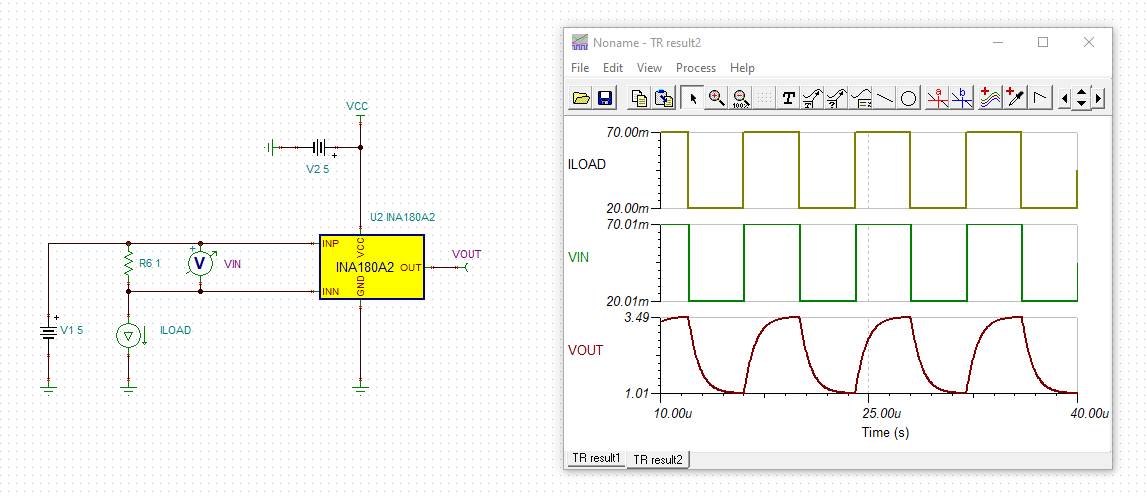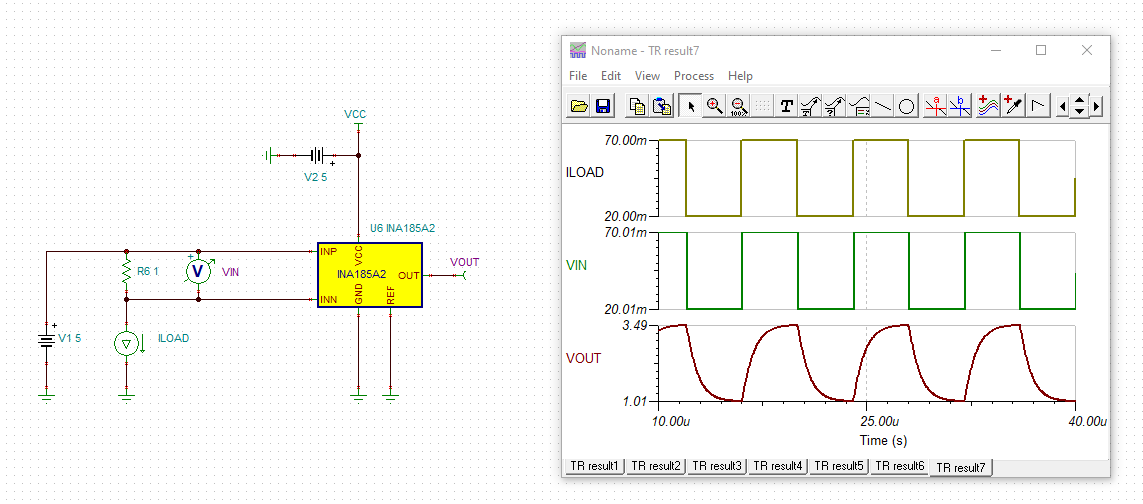Other Parts Discussed in Thread: INA240, INA381, INA290-Q1, INA303, INA302, INA301, INA180, INA293-Q1, INA181, TINA-TI, INA200-Q1, INA302-Q1, TLV3201-Q1, , TLV4021, INA185, TLV3201, INA293
Hi team,
I would like to decode the signal from the sensor which is superimposed on to the power line(5V to 9V).
Power is sourced by regulator and the signal is transmitted by the sensor by alternating its load current.
The interface is a current modulation from 20mA to maximum 70mA. The data is Manchester coded binary data and its current amplitude can
be adjusted from 20mA to 70mA.
I would like to sense the load current by shunt resistor on the power rail(5V to 9V) and would like to decode the Manchester code.
Could you advise the best possible solution to achieve this?
regards,






